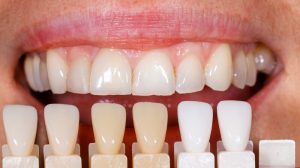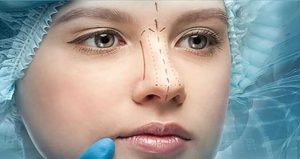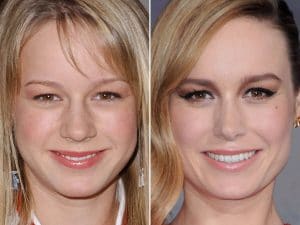Parents put forth a lot of effort to make sure their kids are successful, happy, and healthy. It’s a fulfilling career where you get to create endless memories, from happy or humorous ones to those that are quite difficult. Despite this, being a parent may be quite challenging. Particularly when it comes to your child’s health, you have to keep track of a lot of data. Even when you focus on one particular area of their health, like their dental health, the many words might get perplexing. That’s where Smile Team Turkey comes in, thankfully!
Our pediatric dental professionals are here to assist in ensuring that your kid grows up with strong, healthy teeth and gums. We are available to address your inquiries. The difference between pediatric dentistry and orthodontics is one of the subjects we are asked about frequently. Particularly as dentists start advising that kids receive their first orthodontics examination sooner. What distinguishes these two branches of dentistry from one another, and how do they interact? We’ve put together a comparison difference between pediatric dentistry and orthodontics to assist you in comprehending the responses to these inquiries.
Pediatric Dentistry and Orthodontics Have Different Focuses
The primary difference between pediatric dentistry and orthodontics is the emphasis placed on each. The dental health of children is the focus of the specialist area of dentistry known as pediatric dentistry. Dentists that specialize in treating children are essentially pediatric general practitioners. Pediatric dentists check and clean your child’s teeth twice a year.
Moreover, monitor the growth of the baby and permanent teeth, remove cavities, and do other standard procedures. Another specialty in dentistry is orthodontics, which has a more focused focus on realigning patients’ bites. Orthodontic procedures may be carried out at any age and enhance a patient’s smile’s beauty and overall health, although it’s usually preferable to cure issues as soon as possible. Despite these difference between pediatric dentistry and orthodontics share a common goal of improving your child’s health. It is making them both vital to safeguarding and preserving your child’s long-term oral health.
Pediatric Dentistry and Orthodontics Have Different Education Programs
Orthodontists and dentists both receive a lot of the same training. Before beginning their careers, orthodontists must complete an extra educational qualification. The main difference between pediatric dentistry and orthodontics is that have some different training. Before continuing on to a graduate school of dentistry, dentists often attend college to get a pre-dentistry or pre-medical degree. Like other medical professionals, dentists must undergo significant training in their field and complete a residency in order to become qualified. Passing a rigorous test is a requirement for certification.
Like other medical professionals, dentists must complete significant training before practicing. The classroom and lab are where dentistry school’s first two years are spent. Dentists work with patients for the last two years while being supervised by a recognized dental school.
To become licensed practitioners, dentists must take and pass the National Dental Examination after graduating from dental school. Before enrolling in dental school, orthodontics commonly major in pre-med or pre-dental throughout their undergraduate studies. Orthodontists attend an orthodontic residency program for an extra two to three years to obtain a specialized certification in orthodontics after graduating from dentistry school and passing the certification exam. Therefore, another difference between pediatric dentistry and orthodontics is that they have different certificates.
Dentists and orthodontists work with patients to address a variety of dental and oral health issues. One of the difference between pediatric dentistry and orthodontics is that they train differently. One of the eight dental specialties is orthodontics, which focuses on treating various malocclusions. Many malocclusions, including underbite, overbite, and deep bite, are treated by orthodontists. They get training in a postgraduate dental school program like the M.D.S., which exposes them to several problems affecting crowded teeth. In their clinical work, they identify and manage diseases affecting the jaws and teeth. Since most of these instances include orthodontic treatment equipment, conventional dentists are unable to manage them because they were not exposed to them throughout their undergraduate training.
What You Should See? Orthodontist or Pediatric Dentistry?
There is a difference between pediatric dentistry and orthodontics. A visit to the dentist may usually fix the most common tooth problems. They can help treat oral infections, mouth inflammation, and gum disease. In some circumstances, a dentist may suggest that you see an orthodontist. An orthodontist may be needed to treat palate expansion, dental crowding, and jaw malocclusion.
Additionally, it is advised that all kids have an orthodontic evaluation before they turn 7 to determine whether braces will be required. There is some difference between pediatric dentistry and orthodontics. Consider skipping the dentist and heading straight to the orthodontist if you’re an adult who thinks your teeth or jawline need to be straightened. If you consider having a dental makeover or dental crowns or veneers, e-max crowns we can help you with those. As Smile Team Turkey, we can offer you different options that suit you best.
Even if you have dental coverage, not every orthodontic procedure will be reimbursed by insurance. Technically speaking, an orthodontist is a specialist. In certain circumstances, your insurance provider won’t cover your visit to the orthodontist’s clinic unless a dentist refers you.
You can reach our previous article from https://smileteamturkey.com/blog/what-is-good-for-tooth-abscess/






